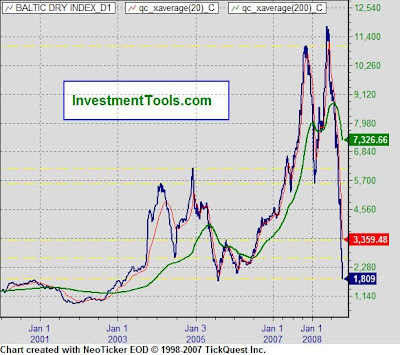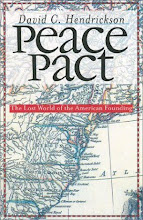 The Baltic Dry Index is a leading indicator of industrial production and trade (click for update). It charts the cost of freight movements in 26 of the world's biggest shipping lanes of "dry" materials, such as coal, iron ore and grain which feed into the production of finished goods some weeks or months ahead. It rose above 11,600 in July 2008 and subsequently fell to 715 on November 28, 95% below the June high (click for updates).
The Baltic Dry Index is a leading indicator of industrial production and trade (click for update). It charts the cost of freight movements in 26 of the world's biggest shipping lanes of "dry" materials, such as coal, iron ore and grain which feed into the production of finished goods some weeks or months ahead. It rose above 11,600 in July 2008 and subsequently fell to 715 on November 28, 95% below the June high (click for updates).This collapse in the BDI was the most dramatic exemplification of the sudden and brutal bear market in commodities, and shows the intimate relationship between the credit dysfunction and world trade. The "inability of shippers to get banks to accept letters of credit from other banks" notes Yves Smith, will lead, if not reversed, to "Smoot Hawley on steriods."
You can see the powerful disinflationary forces across the commodity sector in the series of links gathered by Russ Winter at his perceptive Winter Watch:
"Coffee, higher costs to the economy? No, abating.
Drinks and beverages? Maybe Joe can afford his sixpack again.
Metals, higher costs to the economy? No, enormous relief.
Copper cathode for transmission lines? huge relief
Logs? Timberrrrrr!
Rubber? meets the road
Rice, panic buying? No, hoarding bubble has burst.
Oranges, prices killing consumers? Nao mais.
Beef? Rollar coaster but on the down slope.
Shrimp? cheapest in years
Olive oil? cheapest in years.
Soybean meal used to feed poultry? the hyperinflationary spike is gone, good riddance!
Cotton for clothes? Look for big sale items this Christmas on clothes, and hardly distressed selling."
11/28/08


